COLD HARDY
PLANTS
Growers and Breeders of Unusual Cold Hardy
Plants |
| |
|
Agave parryi var. havardiana
|
Quantity
of plants tested: 15
Size of plant tested: 1st year seedlings which germinated 2nd week
of May 2000.
Soil texture: sandy loam
When planted: the seedlings were planted in soil in June 2000.
Winter protection: no mulch of any kind, glass covered top of
seedlings from early November through March 2000.
Microclimate: cold microclimate, 100% shaded from November through
mid February.
Temperature: refer to 2000-2001 winter on this chart
Findings: all the plants died but one. All did well until February
when the soil surface thawed but the lower soil remained frozen. The
lower frozen layer prevented the excess moisture at the surface from
draining, therefore, the seedlings were sitting in water for several
days. There were many days when the top 1/2" to 1" of soil
was thawed, but the lower soils were still frozen. Freeze/thaw
cycles may have also played a role in their death since water expands 10%
when frozen. Low temperature was not observed to be the cause of
death, this years low was 4F. |
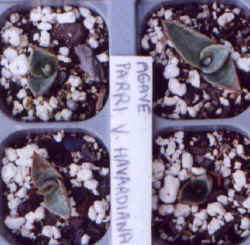 |
September
20, 2000 - This photo shows the first year seedlings which germinated
during the second week of May 2000. Seedlings grow slow the first
year and are approximately 1" in diameter. |
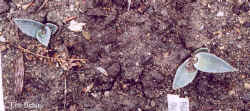 |
January
27, 2001 - here's two of the seedlings. Little to no damaged was
observed to date. |
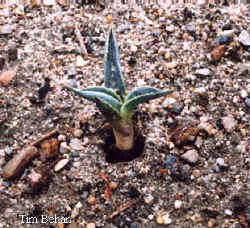 |
February
4, 2001 - this photo shows one seedling with a "hole" around
the stem. This hole was created by excess moisture when the upper
soil levels thawed and the lower soil levels were frozen and by the
freeze/thaw cycle. The seedlings started to look very poor in late
February. |
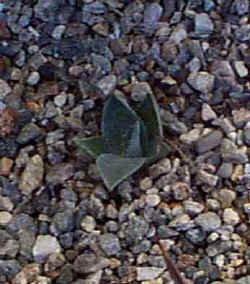 |
September
27, 2001 - this photo shows the sole survivor from the winter of
2000-2001. It had to be relocated in the spring, but thankfully it
survived the relocation process and is doing well. It's now located
1ft from a south facing wall in a warm microclimate. |
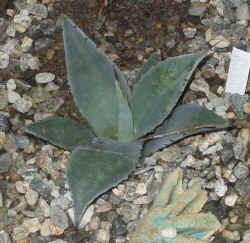 |
October
27, 2002 - here's the same plant a year later. |
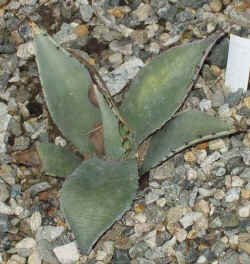 |
April
13, 2003 - here's the same plant after the cold winter of
2002-2003. This Agave did much better than the parryi which was
located only a few feet away. |





